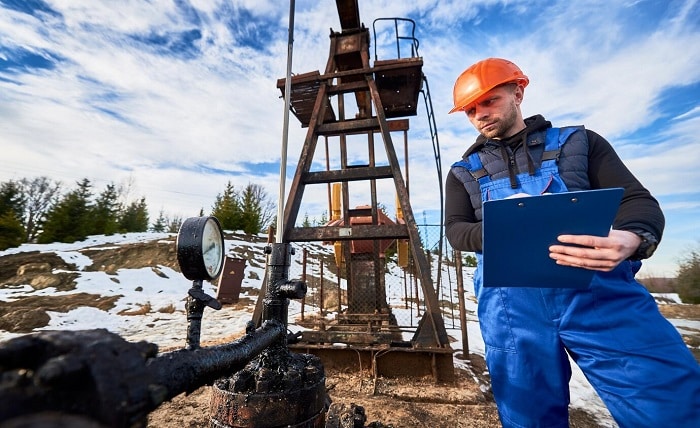
Oil rigs operate in some of the harshest environments on Earth, making safety and productivity pivotal to their function. Proper monitoring is at the core of oil rig operations, ensuring a safer workplace while maximizing efficiency. From leveraging technology to maintaining robust protocols, effective monitoring depends on a range of practices. This guide explores the best strategies to achieve safety and productivity in oil rig operations.
The Importance of Monitoring in Oil Rig Operations
Oil rigs are complex ecosystems where machinery, personnel, and natural forces interact. Without constant monitoring, minor issues can quickly escalate into major hazards. Monitoring ensures:
- Worker Safety: Detecting risks, such as gas leaks or mechanical malfunctions, helps prevent accidents.
- Operational Efficiency: Keeping equipment in top condition ensures consistent output and reduces downtime.
- Environmental Responsibility: Monitoring can minimize spills and environmental damage, keeping operations compliant with regulatory standards.
Top Practices in Oil Rig Safety Monitoring
1. Use Advanced Sensors for Real-Time Feedback
Employing advanced sensing devices is critical for early hazard detection. These sensors track temperature, pressure, vibration, and more to provide real-time feedback. Anomalies in these data points can give early warnings about potential failures, ensuring immediate corrective action.
2. Establish a Predictive Maintenance Culture
Predictive maintenance involves evaluating equipment health based on data trends rather than waiting for breakdowns. Using predictive analytics helps reduce unplanned repair costs and extends equipment lifespan. Pressure transmitters, for instance, are instrumental in monitoring pressure levels in pipelines to avoid pressure-related incidents.
3. Train Workers Consistently
Technology alone isn’t enough; teams must be thoroughly trained in recognizing warning signs and responding to emergencies. Regular drills and refresher courses help employees stay sharp and confident in high-pressure situations.
4. Monitor Environmental Conditions
Oil rigs contend with severe environmental conditions, such as high winds, shifting waves, and extreme temperatures. Monitoring weather and oceanic data allows rigs to adjust operations to ensure safety. For instance, preparing for a storm ahead of time can minimize risks to both workers and equipment.
Enhancing Productivity Through Rig Monitoring
While safety is the top priority, oil rig monitoring also significantly impacts productivity. Efficient operations require streamlined workflows and optimized equipment use. Below are some insights into boosting productivity:
1. Automate Data Collection and Analysis
Manual monitoring can be time-intensive and prone to errors. Automated systems enable faster, more accurate data collection and analysis, which ensures quicker decision-making. With automation, rig managers can focus on interpreting results rather than gathering raw data.
2. Implement Centralized Monitoring Systems
Centralized platforms provide a single interface to monitor multiple systems and devices concurrently. This eliminates communication silos and enhances cross-functional collaboration. Comprehensive views of operations empower teams to allocate resources where they’re needed most.
3. Schedule Inspections Regularly
Routine inspections help detect wear and tear in earlier stages, reducing the chances of costly equipment failures. Pipe inspections are a critical part of this process, ensuring that the integrity of the rig’s infrastructure is maintained. Align these inspections with real-time monitoring efforts for a full-circle maintenance approach and optimal productivity.
4. Analyze Historical Data for Insights
Harnessing historical data from past performance can uncover patterns and trends. For example, certain equipment may fail more often during specific seasons. These insights can guide proactive adjustments and improve long-term operational strategies.
Emergency Response and Crisis Management
No monitoring guide is complete without addressing emergencies. Even with robust systems in place, unforeseen incidents like blowouts or leaks can occur. An effective emergency response plan involves:
- Clearly defined roles for personnel during crises.
- Pre-set protocols for evacuations or risk mitigation.
- Constant communication between teams to ensure alignment in response efforts.
Regularly updating and testing these plans ensures they’re effective when needed most.
Conclusion
Oil rig monitoring plays an essential role in ensuring both safety and productivity. Adopting best practices, such as investing in advanced sensors, leveraging predictive maintenance, and fostering employee training, helps maintain operational excellence. Monitoring environmental conditions and centralizing systems further enhance efficiency.
By focusing on real-time data, automated systems, and predictive insights, oil rigs can overcome the challenges posed by their demanding environments. With the right strategies in place, oil rigs can reduce risks, boost output, and maintain a sustainable balance between safety and productivity.




